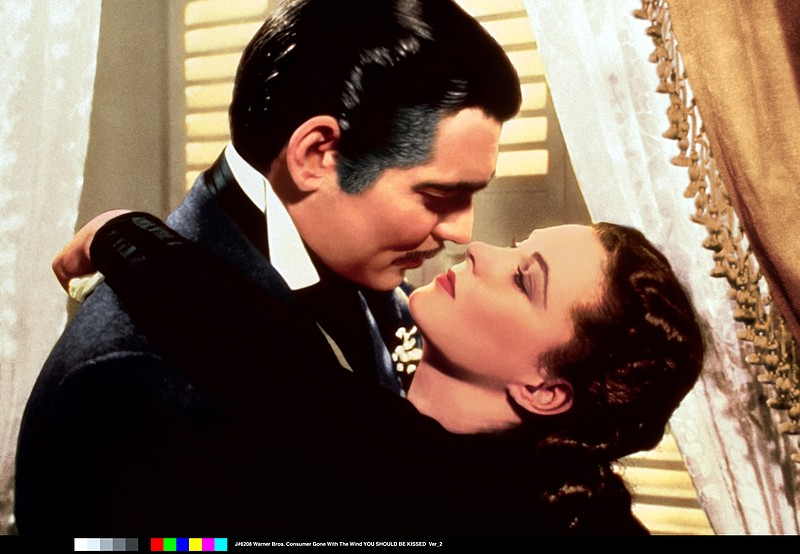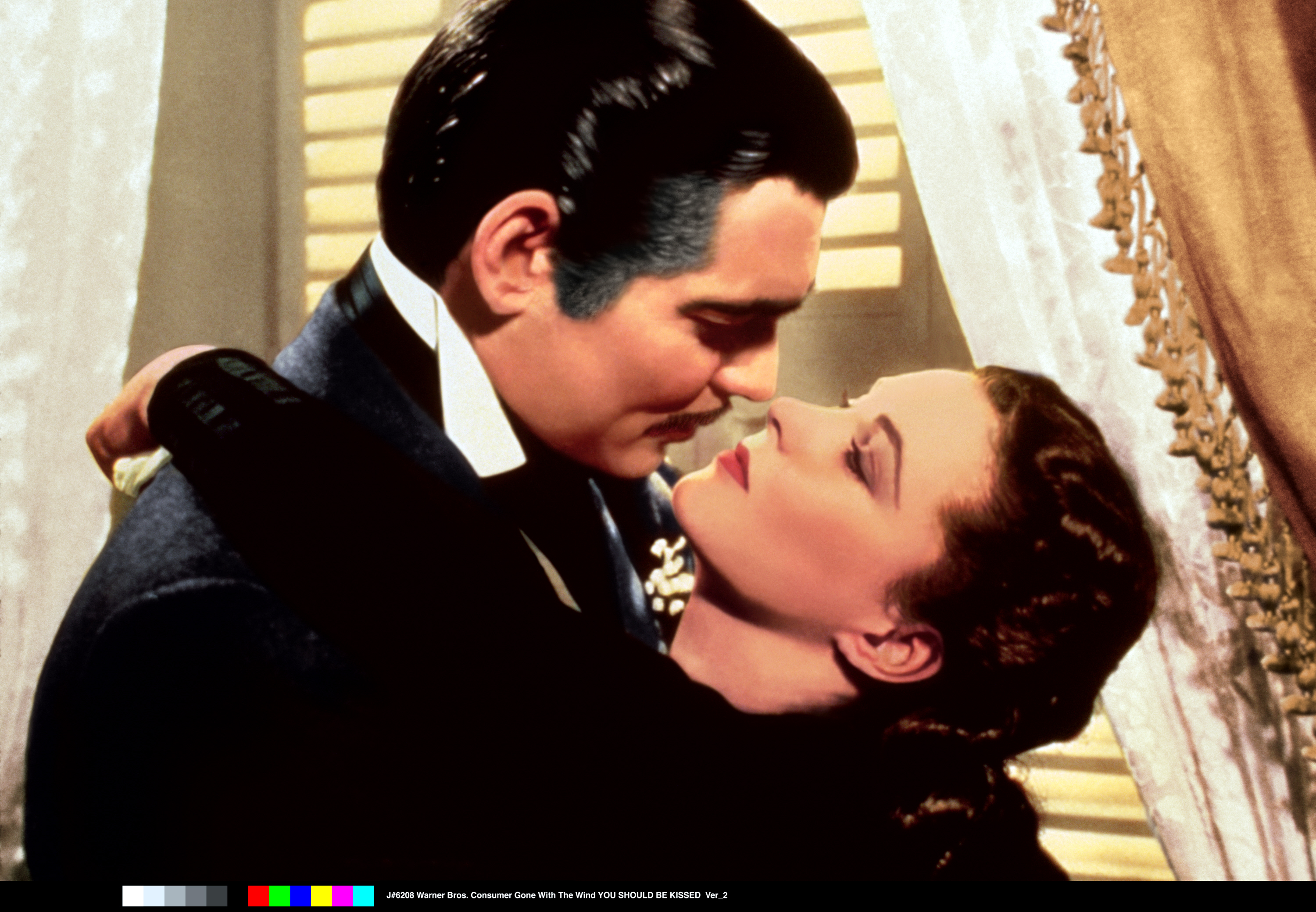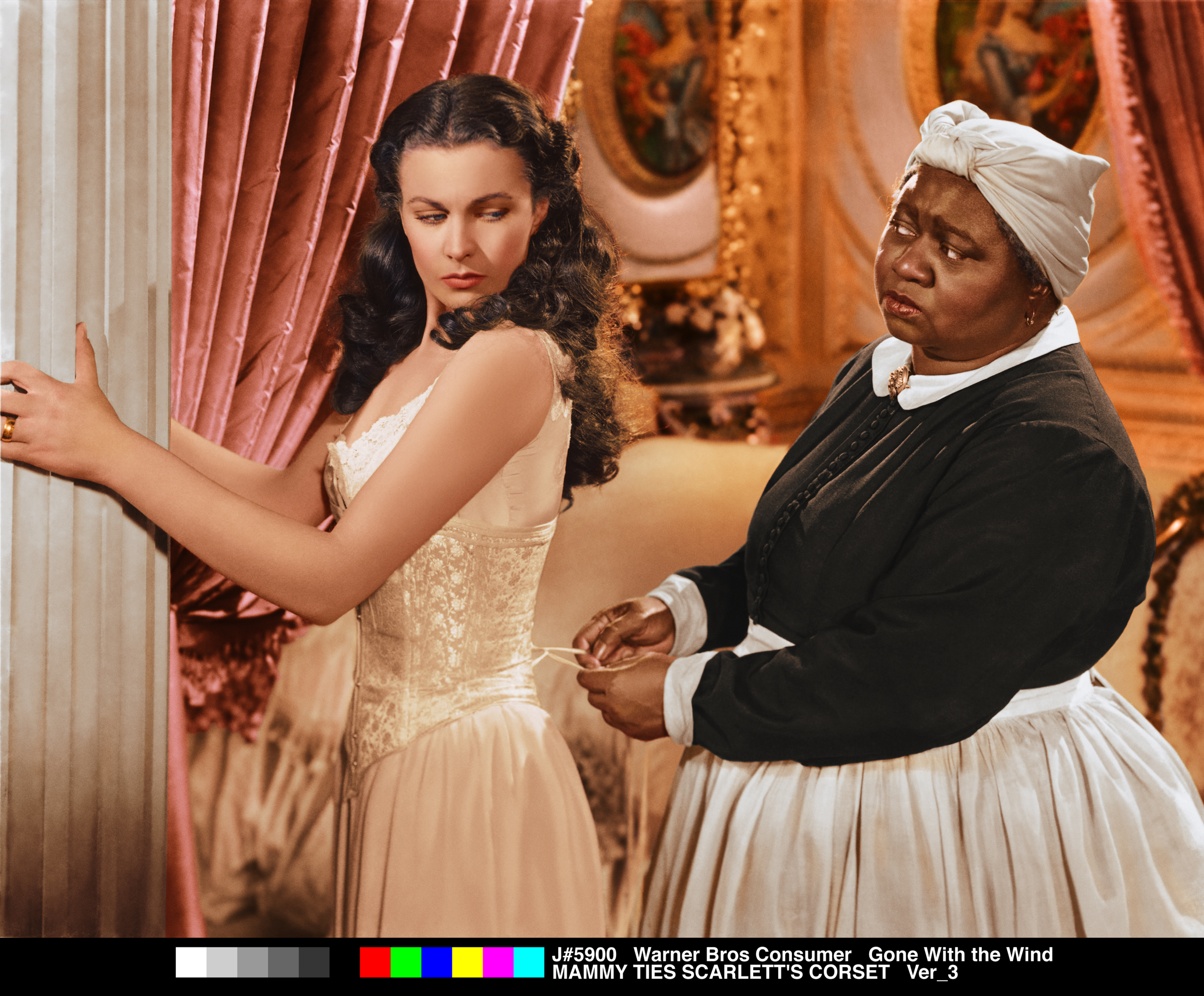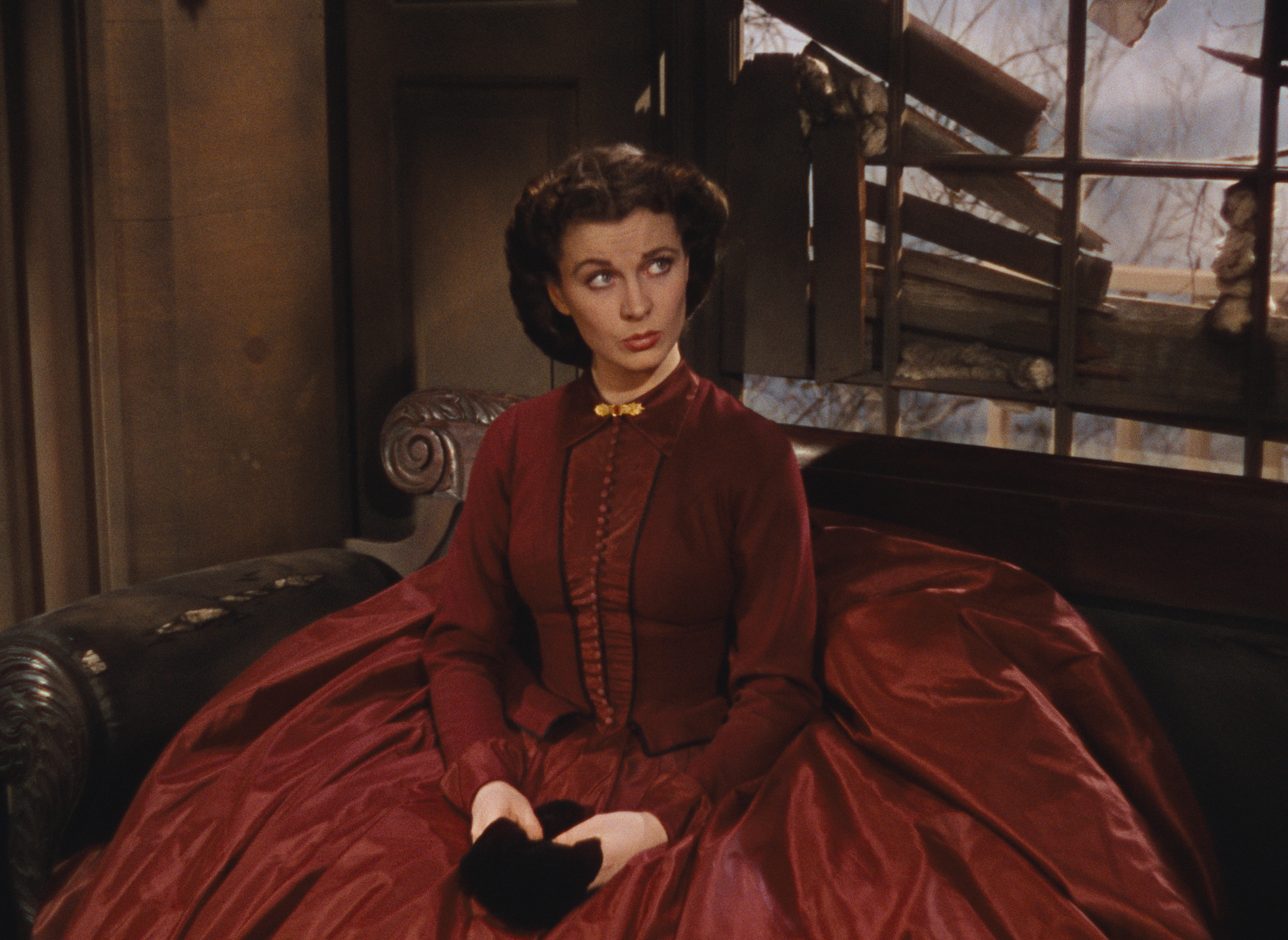Awards and honors
* The American Film Institute has recognized "Gone With the Wind" on several "best of the century" lists, including overall film (No. 6), actor/actress (Vivien Leigh, No. 16/Clark Gable, No. 7), romance (No. 2), musical scores (No. 2) and inspirational films (No. 43) * "Gone With the Wind" was among the first group of films inducted into the Library of Congress' National Film Registry in 1989. • The film won eight of its 13 Academy Award nominations, for best Picture, Director, Actress, Adapted Screenplay, Supporting Actress, Cinematography (Color), Film Editing and Art Direction. It also won a special award for the use of color and the Technical Achievement Award.
Fiery and headstrong as she was, even Scarlett O'Hara probably would have had difficulty imagining her legacy lasting for so many tomorrows.
On Monday -- tomorrow, if you must -- "Gone With the Wind" will celebrate the 75th anniversary of its premiere at Loew's Grand Theatre in Atlanta.
The film, based on Margaret Mitchell's Pulitzer Prize-winning novel, is one of Hollywood's great epics, a sweeping Southern tale of tumultuous love and tragic loss set against a backdrop of a war that consumed lives and culture in equal measure.
Even 75 years after its debut -- and more than twice that since the events it depicts -- fans say the film resonates just as strongly as ever.
"I've seen the movie so many times it's embarrassing," says 26-year-old Jeska Dolezal, of Ringgold, Ga.
Growing up, Dolezal treasured the dress her mother made for her based on one of the many gowns worn on-screen by Vivien Leigh, the controversially cast British actress who portrayed O'Hara. Later in life, she even named her daughter after the heiress of Tara.
Every year, Dolezal says she sees "Gone With the Wind" about 10 times, and despite a demanding run time that creeps within minutes of four solid hours, she insists it is captivating in its entirety.
"It's a long movie, but it's beautiful," Dolezal laughs. "I guess to me it's not that old. People can definitely still enjoy it."
Despite a few reservations, critics are equally enamored of it.
In a 1998 retrospective review, the Chicago Sun-Times' Roger Ebert said that -- in spite of its lamentable glossing-over of the horrors of Southern slave culture -- "Gone With the Wind" was an undeniably well-crafted bit of narrative.
10 Fast Facts
1 Although she later won the Best Supporting Actress Academy Award for her role as Mammie, Hattie McDaniel was unable to attend the segregated theatrical debut in Atlanta, a move that incensed co-star Clark Gable. 2 At 238 minutes (3 hours, 58 minutes), "Gone With the Wind" is the longest-running film ever to win an Academy Award for Best Picture. 3 Other actors considered for the role of Rhett Butler alongside Clark Gable included Gary Cooper, Errol Flynn and Ronald Colman. 4 Despite it being a quintessentially Southern tale, two of "Gone With the Wind's" stars, Vivien Leigh (Scarlett O'Hara) and Leslie Howard (Ashley Wilkes), were British. Had Englishman Ronald Colman won out as Rhett Butler, the film would have featured a predominantly un-American cast. 5 For the scene depicting the burning of Atlanta, David O. Selznick set fire to many sets used in previous films, including the iconic gate used in "King Kong." 6 In 1936, David O. Selznick purchased the rights to "Gone With the Wind" from Margaret Mitchell for $50,000 (about $854,000 in 2014 dollars). He later doubled the amount after deciding she had been underpaid. 7 In a nationwide talent search for the right Scarlett, 1,400 women tried out for the part. Thirty-two did screen tests, including Lana Turner and Paulette Goddard. 8 Vivien Leigh couldn't dance. All shots of Scarlett tripping the light fantastic feature a dance double, Sally De Marco. 9 Michael Jackson paid $1.5 million at auction in 1999 for the "Gone With the Wind" Academy Award statue for Best Picture. 10 Although the theatrical release of "Gone With the Wind" is undeniably lengthy, the initial rough cut was 48 minutes longer.
"It is still a towering landmark of film, quite simply because it tells a good story, and it tells it well," he writes. "It will be around for years to come, a superb example of Hollywood's art and a time capsule of weathering sentimentality for a 'Civilization gone with the wind,' all right -- gone, but not forgotten."
Timeless from day one
Interest in the film was at a fever pitch leading up to its debut in 1939. Almost immediately following its star-studded premiere at the Loew's Grand, audiences began hailing the adaptation of Mitchell's best-selling novel as a cinematic masterwork.
Journalists who were among the 2,300 attendees to the premiere wrote about the screening using poetic verbiage that was as grandiose as the romances and vistas the film depicted in vivid Technicolor.
"Sherman's cannon never roared more loudly, nor did the hoof beats of his cavalry cause more clatter than did the Confederate audience as it watched the ... unreeling of the cotton slave and carpetbag era that is gone forever," reads a report filed Dec. 16, 1939 by Henry McLemore, a staff correspondent for United Press.
Those in attendance at the debut ranged from Leigh and co-star Clark Gable to a handful of aging Confederate veterans, who were given a standing ovation by the audience and seats near the front of the theater.
The film's iron-fisted mastermind, producer David O. Selznick, was also on hand to see the final product of a madhouse production that included a nationwide talent search for a suitable Scarlett and eventually ground its way through a slew of writers and three directors, one of whom, Victor Fleming, took a hiatus during filming due to extreme exhaustion.
Other attendees of the debut included the governors of South Carolina and Georgia. The latter of these, Eurith Rivers, declared: "It was grand. This is the first time that I have seen our side of the War Between the States faithfully depicted."
In his United Press report, McLemore wrote that Mitchell, the novel's notoriously shy author, addressed the crowd after the screening, saying, "I cried again and again, just as did many of you. They joked about the fact that Mr. Selznick took so long to produce the picture. But now that we have seen [it], we all know that he was right in waiting until he could get the perfect cast."
However, still-active segregation laws in Georgia prevented the film's black cast members from attending the premiere, including Hattie McDaniel, whose portrayal of house servant Mammy won the Academy Award for Best Supporting Actress. Her recognition by the Academy, a first for a black actress, led to one of eight statues -- and two special awards -- the film took home during its sweep of the Oscars in 1940.
Fans forever
Unlike its leading lady's fair-weather affections, once one falls in love with "Gone With the Wind," fans say it's difficult to fall out again.
Rossville resident Bonnie Blackwell was 13 when she was introduced to "Gone With the Wind," courtesy of an original 1936 printing of the novel that was gifted to her by an antique book dealer.
Within a week, she finished all 1,036 pages and has been a fan ever since.
"I was drawn into the romance of the Deep South, the difference in times and the cultural differences," Blackwell, 33, recalls. "Not long after reading the book, I watched the movie for the first time, [and] watching my favorite characters brought to life was amazing."
For Chattanoogan Terrie Edwards Frederick, who passed away on June 18, adoration for "Gone With the Wind" was literally a lifelong passion.
Frederick was one of the few noncelebrities in attendance at the Atlanta premiere. In a 2009 interview with the Times Free Press, she recalled attending the screening at age 8 with her mother and father, the superintendent of a flour mill who was given a pair of tickets by the mill's general manager.
Perched between her parents' seats, she was entranced by the film from the moment the title swept across the screen in towering white letters.
"I think it's the best movie ever filmed," she said. "In my humble opinion, it's probably the only example in entertainment and movie history that the movie was better than the book.
In the mid-'80s, Frederick co-sponsored a "Gone With the Wind" forum at the Read House to celebrate a screening of a restored copy of the film at the Tivoli Theatre. Even 50 years after its release, its tale was just as impactful, she recalled.
"That movie will always be popular, the same as Elvis Presley's music will live on for many years after you and I are gone," Frederick said. "It never ceases to amaze me; it was just superbly done."
Not just in Dixie
Although it routinely is described as a quintessentially Southern tale, the appeal of "Gone With the Wind" is not nearly as regional as some might think, says Connie Sutherland, the director of the Marietta Gone With the Wind Museum, operated by the city of Marietta, Ga.
In addition to displaying memorabilia that encompasses costumes, including Scarlett O'Hara's "honeymoon gown," and Mitchell's personal copies of the novel, the museum also hosts events that have brought in fans from well beyond the bounds of the Mason-Dixon.
"The entire state of Ohio comes," Sutherland says, laughing. "It's not just Southerners, certainly not."
Quotable quips
"Gone With the Wind" is rife with memorable lines, several of which made it onto the American Film Institute's list of the Top 100 most memorable in all of cinema. No. 1: "Frankly, my dear, I don't give a damn." No. 31: "After all, tomorrow is another day!" No. 59: "As God is my witness, I'll never go hungry again."
Every year, the museum attracts about 10,000 visitors, some of whom have traveled from as far away as Washington state, England or Poland to be there.
"You kind of think that there's still a little bit of that Civil War mindset ... where 'We're on this side, you're on that side and never the twain shall meet,' but that is certainly not the case with 'Gone With the Wind,'" Sutherland says. "There are so many fans who live north of us who just absolutely love it."
The film's appeal takes just as little notice of age. Recently, Sutherland sneaked out of her office to observe a 7-year-old girl who stood clutching a doll while raptly watching the drama unfold on a nearby TV screen, where the film is shown on a loop.
While she was possibly the youngest "Gone With the Wind" fan Sutherland recalls seeing, she says that girl's interest speaks volumes about the timelessness of the film and its assured resonance with future generations of viewers.
"There are all these new fans, the younger ones, and it's important to them, too," she says. "They see it, and they don't see the history; they just see a good movie that has all the elements.
"I think this anniversary won't be the last one. I think 'Gone With the Wind' will never be gone."
Contact Casey Phillips at cphillips@timesfreepress.com or 423-757-6205. Follow him on Twitter at @PhillipsCTFP.



